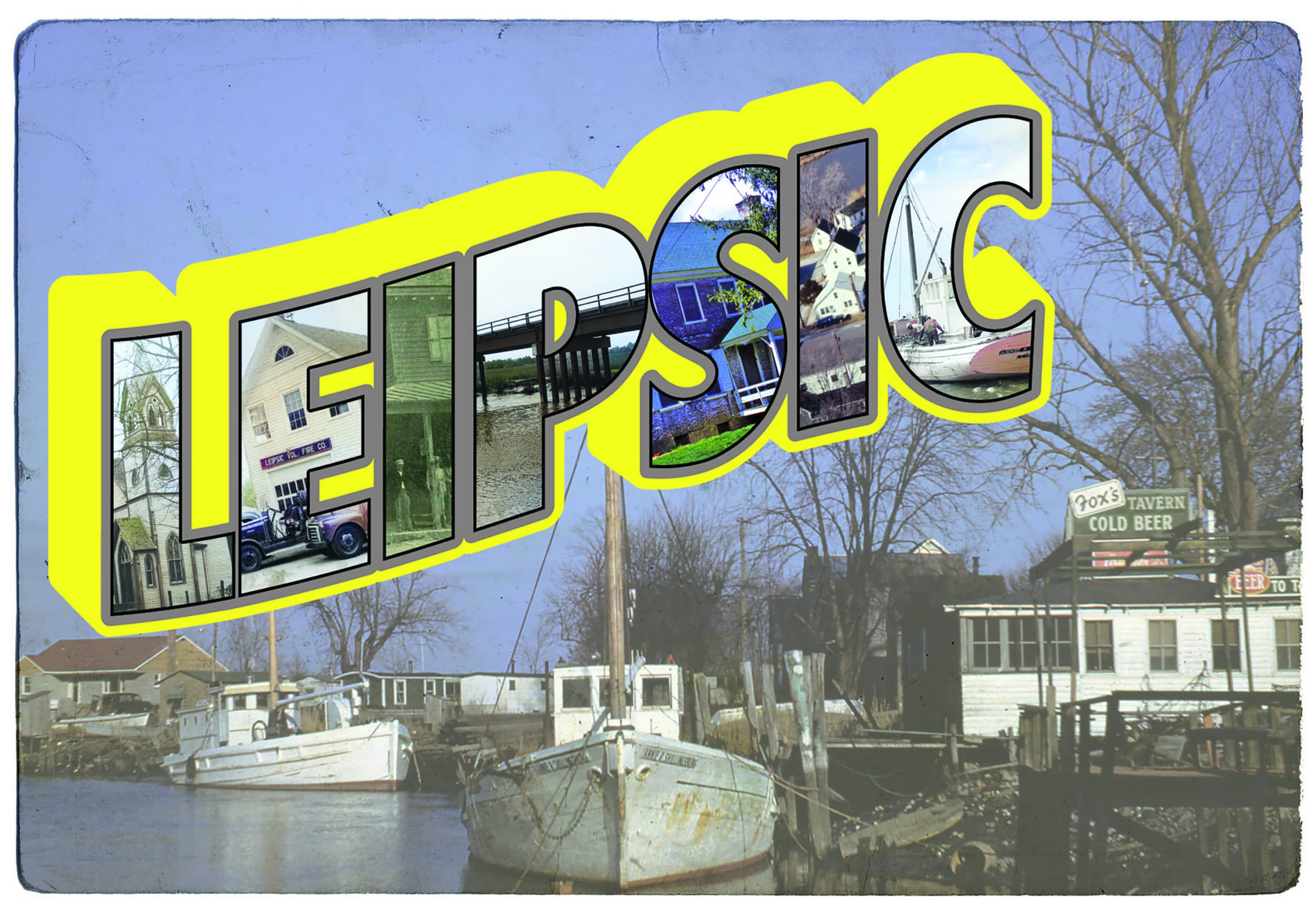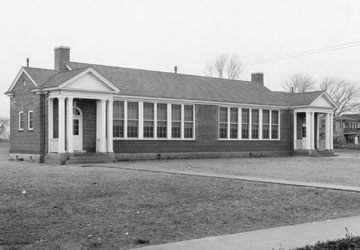


A settlement, known initially as Fast Landing, was formed at the first fast landing in the Leipsic River in the late eighteenth century. It became a shipping center with lumber, grain, oysters, and many agricultural products shipped from its wharves. By 1814, due to its highly successful muskrat pelt industry, it had taken the name Leipsic, after Leipzig, Germany, a fur trading center. By the mid-nineteenth century when the Town was incorporated, hotels, canneries, a steam-powered grist mill, several stores, shipyards and docks where as many as twenty-four boats could tie up at one time. However, the Town’s early commercial success declined throughout the second half of the century and by the early twentieth century, the sail-powered oyster trade was the main source of business.
In 1852, Leipsic was incorporated as “The Commissioners of Leipsic.” Males and unmarried females, who were taxable in the Town and over the age of 21, could vote. Three elected Commissioners were to work with a surveyor to plot the Town. The Commissioners were to meet four times a year in order to pass ordinances for the good of the government, the improvement of the streets, the paving of the sidewalks, the protections of ornamental trees, the repair and making of public pumps, and all other matters relating to the general welfare of the Town. The Commissioners were to appoint a Town Clerk, an Assessor, a Treasurer, and a Tax Collector. The Alderman and the Constable, charged with keeping the peace, were to be drawn from those already appointed by the County and serving in the Town. The maximum amount of tax to be charged to the Town’s residents was $100 annually and this was to be used for the improvement and benefit of the Town. The cost of improving the sidewalks was to be borne by those owning the property fronting on them.1
The first amendment to the 1852 Incorporating Act was passed five years later, in 1857. At that time, Front and Main Street already existed, but the Commissioners were given the power to open a number of additional streets that had been indicated on the plot of the Town prepared in 1853. The streets to be opened were Second Street, Chestnut Street, Denny Street (Smyrna-Leipsic Road), Lombard Street, Brown Street, Stout Street, and Hutcha Alley. The Commissioners were to also open two new Streets, Chestnut and West Streets. All of these streets exist in Leipsic today except Brown and Stout Streets which are shown on the plot as being east of Main Street. In the same law, the Levy Court of Kent County was authorized to allocate between $50 and $100 yearly to be used to improve the Town’s streets.2 In 1877, a law passed which provided that certain specified agricultural lands which were located within the boundaries of the Town according to the plot on record were to be excluded from the Town and were not subject to Town taxes.3 In 1889, amendments were made to the 1852 Incorporating Act which changed the structure of the government. The number of Commissioners was increased from three to six and they were to serve staggered three-year terms. The Alderman was to serve as the President of the Board of Commissioners, but he was to vote on matters before the Board only in the case of a tie.4 An act passed in 1891 expanded on provisions contained in the 1852 Incorporating Act. It provided for the registration of dogs and for charging fees to keep them.5
In 1899, Leipsic was re-incorporated as “The Town of Leipsic.” A general description of the boundaries of the Town was included in the Act. It called for all male taxpayers over the age of 21 to be able to vote in the election of six Commissioners, four of who were required to be freeholders in the Town, with the others only required to be residents. All would serve staggered, three-year terms. The Commissioners were to choose one of their members to serve as President whose duties were to include presiding over the Commissioner’s quarterly meetings. Town officials, chosen by the Board of Commissioners, included a Town Clerk, an Assessor, Tax Collector, Treasurer, Alderman, and Constables. The powers of the Board of Commissioners were expanded from that in the 1852 Incorporating Act. In addition to the powers previously conveyed, they were to preserve the health of the Town’s citizens, prevent the introduction of infectious diseases, define nuisances and remove them, prohibit the firing of guns, setting off of fireworks and the making of bonfires, repair and improve the streets and sidewalks, light the streets, and to preserve and maintain peace and order in the Town. The maximum amount of taxes to accomplish these goals was to be no more than $900 annually. The Levy Court of Kent County was to assist in improving the streets by allocating $100 annually. The Town had the power to levy a special tax only for the purpose of street improvement while sidewalk improvement remains the responsibility of adjacent property owners. With only a few amendments, the 1899 Incorporating Act would govern the town for the just over the next hundred years.6
Five laws amended the 1899 Incorporating Act. The first was in 1913 and it provided for a $100 increase in the annual allocation from the Levy Court of Kent County towards maintaining the Town’s streets.7 The next amendment was fifty-six years later, in 1955, when the amount of the annual maximum tax was increased to $1,500.8 In 1971, the voting procedures were amended to allow all those who could vote in the state’s general election to be eligible to vote in Leipsic Town elections.9 In 1984, the maximum general tax that could be levied annually was increased to $5,000.10 This was again increased in 1997, to $25,000.11
The Town was re-incorporated in the year 2000. The Charter does not list the corporate boundaries but refers to a plot book in the Kent County Recorder of Deeds office. The power to annex land and the procedures to accomplish this are outlined. The power to govern the Town is vested in a six-member Town Council, who are elected by residents 18 and over, and who serve three-year terms. The Council chooses a member to act as President, who also serves as the Town’s Mayor and head of the government. Other Town officials chosen from the Council are the Deputy Mayor, a Secretary, and a Treasurer. Meetings of the Council are held six times a year. Town officials appointed by the Council include the Town Tax Collector, the Town Attorney, and the Town Constable. The powers which were part of the 1899 Incorporating Act remain but new powers have been added. Specifically mentioned are the power to engage in and regulate businesses conducted in the Town including the award of franchises, regulate the construction of buildings and to enforce these regulations, regulate and enforce the maintenance of property, construct and maintain water mains, drains, and sanitary sewers, and to distribute water within five miles of the Town and to condemn land related to the same. The Charter calls for all new developments to be reviewed by the Council. Leipsic is authorized to borrow money for immediate needs as long as this does not exceed 1% of the assessed valuation of the taxable real estate or $200,000, whichever is greater. They are authorized to levy taxes and to use Kent County’s assessment to determine the value of property. The annual maximum taxation is not to exceed 2% of the assessed valuation of the Town’s taxable real estate.12
The Town’s current Charter has been amended only one time. In 2005 changes were made to the procedures for annexing land.13
For the fully amended text of the current Charter, see http://www.charters.delaware.gov/leipsic.shtml
CITATIONS in Del. Laws
1 10 Del. Laws, c. 683 (1852) [pp. 687-90]
2 11 Del. Laws, c. 415 (1857) [pp. 468-70]
3 15 Del. Laws, c. 463 (1877) [p. 600]
4 18 Del. Laws, c. 640 (1889) [pp. 813-14]
5 19 Del. Laws, c. 225 (1891) [pp. 444-45]
6 19 Del. Laws, c. 282 (1899) [pp. 523-32]
7 27 Del. Laws, c. 233 (1913) [p. 665]
8 50 Del. Laws, c. 55 (1955) [p. 93]
9 58 Del. Laws, c. 260 (1971) [p. 763]
10 54 Del. Laws, c. 307 (1984) [p. 692]
11 71 Del. Laws, c. 55 (1997) [p. 91]
12 72 Del. Laws, c. 466 (2000) [pp. 1000-14]
13 75 Del. Laws, c. 96 (2005) [p. 131]
Delaware Laws from 1935 to present can be found online at http://delcode.delaware.gov/sessionlaws/
Town of Leipsic records at the Delaware Public Archives:
jnl / August 31, 2018 | April 23, 2019